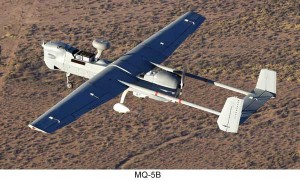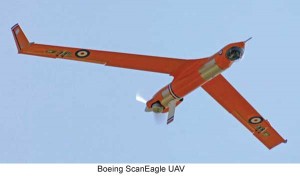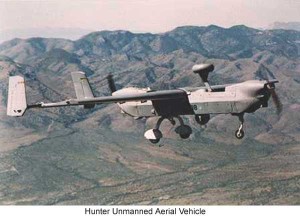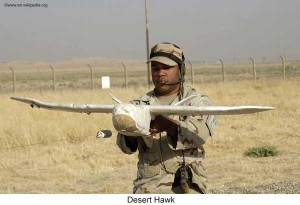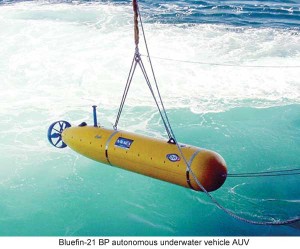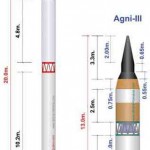It is difficult to identify the exact nature of modern day warfare. The notion of modern day warfare is evolving with changing times. However, the purpose of fighting wars has more or less remained same and in broad terms what actually has changed are mainly the concepts and the methods of war fighting. Over the years it has also been observed that the practice of war shows dramatic changes depending on the developments in the military technologies. In the 21st century the developments in Information Technology (IT) have played a major role towards developing the war doctrines for various nation states. These technologies have acquired the foremost role in determining the development of concepts like Revolution in Military Affairs (RMA), Network Centric Warfare (NCW) and Fourth Generation Warfare.
At tactical level the technological growth has also been instrumental towards increasing the awareness of military commanders by providing them with the real-time information from the actual war zone. Along with IT, the space technologies have also played a key role towards developing modern war fighting concepts and techniques. The communication, reconnaissance and navigation facilities offered by satellites have brought in revolution in methods of war fighting.
“It is too early to say with certitude that the manned air-superiority fighter could be replaced by the Unmanned Combat Aerial Vehicles (UCAV). However, as per projections, by 2025, the air-superiority UCAV will probably be technologically feasible.”
It has been observed that the war fighting techniques change with technology progression. However, it is important to appreciate that irrespective of the ‘time in history’ the basic purpose behind war fighting relatively remains the same. Wars are still fought to overpower the enemy. But, what has the changed is the notion about the collateral damage during the war fighting. The purpose and practice of human sacrifice (particularly that of civilian population) for winning wars is increasingly being challenged. This has brought significant changes in the designing of modern war machines.
Historically, it has been seen that the warriors found tanks as the best option to replace the age-old form of cavalry fighting during World War-I. Today, even in the 21st century combat, land warfare essentially revolves around the tank battle. In the early years of its development even the aircraft were not seen as machines with the combat capability. Today, aircraft are central to any war fighting efforts of the states. Similarly, over the years, the submarines have acquired the reputation of a war machine of significance for any sea combat. However, all such war-waging platforms are not being viewed in the traditional sense anymore. All modern machines are not necessarily getting designed to create a large, fearsome contraptions meant to destroy on a large scale. Modern day combat tanks, aircraft and submarines are increasingly being supported by drones, unmanned vehicles and smaller weapons systems. The emphasis of modern day war fighting is on precision, surgical strikes and the reduction in human cost. Rather than bombarding an area with several artillery pieces, an unmanned combat vehicle is used to destroy a specific target1.
Also read: US Aerospace Industry and Aero India 2011
Unmanned vehicles are increasingly being used by states in modern day combat. There are various sub-categories in regard to unmanned vehicles, which includes, various from of missiles, rockets, robot, extraterrestrial probes and even weather balloons. This article discusses the relevance of unmanned vehicles in the modern day conflicts. The article focuses on issues related to vehicles used for the purposes of military uses either in air or land or water.
The Unmanned Aerial Vehicles (UAVs) is the most widely known and used category of the unmanned vehicles. As per the November 2010 report on the UAVs by the ASDReports.com, presently there are over 450 different UAVs operated or developed in 49 countries. There are various categories of UAVs which include Micro air vehicles, Tactical UAVs, Mini UAVs, systems capable of vertical take-off and long endurance systems operated both in medium and high altitudes and UAVs used in combat role (UCAVs-Unmanned Combat Aerial Vehicles).The usage of UAV in wars was first carried out by the Israeli Air Force during Bekaa Valley operations (1982). Israel was the first country to develop and adopt UAVs for reconnaissance and electronic warfare operations2. The Israeli UAVs in the Bekaa valley war created havoc for the Syrian Air Force3. Post 9/11, terrorist attacks in the United States the UAVs and UCAVs have made a significant impact in the Afghanistan theater. They also proved their utility during the Kosovo conflict where the famous Predator UAV was used. During 1996 the MQ-1 Predator unmanned drone was introduced and the craft was first used in a war zone during the 78 days of the 1999 Kosovo conflict. Along with the Predator few other types of UAVs were used for surveillance purposes during NATO air operations over Kosovo, and as per the reports nine of them were shot down4.
Also read: India as a defence manufacturing Hub
The UAV technology and its utility in war fighting have come long way during the last two decades. Today, UAVs are increasingly demonstrating their warfare utility. Various developments in the communication technology and advances made in satellite guidance technologies on one hand and the developments in the field of aeronautics on the other hand have helped induction of the computerized flight control systems, and sensor technologies. In many recent conflicts, these machines have played a significant role. This has become possible because of the considerable improvements in its range, endurance, on-board sensors and data transmission techniques.
In recent times the importance of UAV as a potent force was highlighted by the US. The showcasing of UAV technology during the Bekaa valley operations motivated the US Navy to expedite its own UAV programme. It was the US department of defence which viewed the unmanned vehicles as a key component of the US defence transformation. The US Navy started acquiring UAVs and UCAVs for three primary mission areas: (1) long-dwell, standoff ISR operations; (2) penetrating surveillance/suppression of enemy air defense (SEAD)/strike operations; and (3) tactical surveillance and targeting operations5.Pioneer UAV was procured in 1985 by the US authorities for making available imagery intelligence (IMINT) for spotters for naval gunfire support from its battleships, as well as to provide a UAV capability for the Marine Corps. This UAV was procured for tactical commanders both operating from the land and at sea. This particular machine has supported almost every major US contingency operation. Particularly, during the 1991 Gulf War it had undertaken more than 300 combat reconnaissance missions. Since September 1994, it has flown in contingency operations over Bosnia, Haiti and Somalia. It also flew in Task Force Eagle and IFOR operations over Bosnia during 1995-966.
Also read: Modernization of India’s Military Aviation
Subsequently, within almost a decade’s time major developments took place in the UAV sector and ten different types of UAVs were found employed in Iraq in 2003 to offer constant situational awareness of the location, identity, and movement of hostile forces within a cluttered battle-space. Presently, the various UAV systems are also playing a major role in the conflict in Afghanistan. UAVs were principally used in surveillance and reconnaissance roles during earlier conflicts, but by start of the 21st century they had evolved into sophisticated, air-breathing, hunter-killer platforms7. The idea of UCAVs was perceived and military leadership started looking at this option more seriously in recent times particularly when the role of air power in modern day military conflicts was clearly established in both the Gulf and Kosovo Wars.
The purpose and practice of human sacrifice (particularly that of civilian population) for winning wars is increasingly being challenged.
The developments in the field of UCAVs could be said to have started after verifying that the concept is technically feasible. It was understood by the military leadership that the UCAVs can meet the operational needs and fit into a sound plan of operations. It was argued by the analysts that the historical bias for manned aircraft should not become a stumbling block in embracing this technology in the futuristic technology driven wars8. The campaigns in the Iraq (2003-2010) and Afghanistan (2001) have demonstrated that there is role both for unmanned as well as manned aircraft in the modern day conflicts.
In the 21st century the real strength of Air Power lies with the air-superiority fighters which play a pivotal role in the ability of military forces to gain and maintain air superiority. It is too early to say with certitude that the manned air-superiority fighter could be replaced by the UCAV. However, as per projections, by 2025, the air-superiority UCAV will probably be technologically feasible. For this purpose it is important to achieve major advances in air vehicle, control and payload technologies9.
UAV technology has certain other utilities beyond UCAV role. The concept of multiple UAVs for man hunting operations that can focus concurrently on moving targets is being increasingly visualized. Few automated software’s are making it likely for the UAVs to assist each other in coordinating their search, tracking and interception of the target in a small airspace with a bare minimum input from the operator10.Teal Group is an aerospace and defence market analysis firm based in the US and is known to provide competitive intelligence to industry and government worldwide. As per their 2010 report11 even during the era of recession the UAV sector continued to be the most dynamic growth sector of the world aerospace industry. It has been estimated that UAV spending would double over the next decade from current worldwide UAV expenditures of US$4.9 billion annually to US$11.5 billion, totaling just over US$80 billion in the next ten years. As per this report the US will account for 76 percent of the worldwide research, development, test, and evaluation (RDT&E) spending on UAV technology over the next decade, and about 58 percent of the procurement. It is expected that the likely UAV payloads for the near and distant future would include Electro-Optic/Infrared Sensors, Synthetic Aperture Radars (SARs), Signal Intelligence (SIGINT) and Electronic Warfare (EW) Systems, Command and Control Systems, and Chemical, Biological and Nuclear Sensors.
Also read: Northrop: Achieving Partnership and Growth
UAV technologies over the years have made significant progress. However, the other members of this robotic family namely the Unmanned Ground Vehicles (UGVs) and Unmanned Underwater Vehicles (UUVs) are still in early phases of development. The obvious reason for this is the natures of ‘surface’ which these machines have to face during their operations. There are very less operational limitations on the UAVs because they fly in the open sky and do not encounter any obstacles. However this is not the case for the UGVs or UUVs. Particularly the UGVs have to negotiate with both urban and rural terrain while undertaking operations. Military technologists are trying to overcome the existing limitations of this technology particularly the aspects of automated navigation on the ground.
The existing UGV technology guarantees performance levels at par with the human performance on well-delineated roads in dry weather during daytime with the average vehicle speed of 60mph. The problem exists with off-road operations and during bad weather. Particularly, navigation and obstacle avoidance is a major concern. Also, few other difficult issues like requirement of colour sensors for object identification, anticipating obstacles and hazards at a greater distance (because faster moving UGV would require a greater stopping distance) need to be resolved12.UGVs have two subcategories, Autonomous Vehicles and Teleoperated Vehicles. Like the UAV family they also have Unmanned Ground Combat Vehicles (UGCV) capable of firing on their own or under instructions from the operator. An autonomous UGV is essentially a vehicle that operates on the surface of the ground without any human assistance for navigation and performs designed operations. While the teleoperated UGV is a human operator controlled vehicle from a distance. There are human operators available to observe the performance of the vehicle either visually or on the screen and they guide the vehicle via a wired or wireless communication. Usually, various disabling vehicles are teleoperated and landmine detection/destruction vehicles are autonomous.
Also read: India and the European Aerospace Industry
In autonomous UGVs the ‘spotlight’ is on navigation, obstacle recognition and avoidance, friend/foe recognition and decision capacities. All these functions need significant amount of computing power. The real challenge is to develop hardware and compatible software to carryout such tasks. While the major problem of navigation is addressed by the human operator located at a distance in case of the teleoperated systems. This allows the UGV to undertaken its basic functions with lot of ease.
As per their 2010 report11 even during the era of recession the UAV sector continued to be the most dynamic growth sector of the world aerospace industry. It has been estimated that UAV spending would double over the next decade”¦
The Goliath was one of the first UGVs used as a mobile, armored explosive platform for pillbox, obstacle, and stronghold destruction. This was an operator controlled and detonated device through a 400-meter electric cable, which spooled from the rear of a “mother” vehicle or trailer. The first field use of this unit was made in 1944 but even today this technology is still in nascent stage of development13. The US has been the leader in the UGV technology and their Army Research Lab’s have been involved in developing this technology for many years. The major focus on this research has started since mid 1990s. In September 1999 the first two unmanned vehicles were deployed during troop exercises at Aberdeen Proving Ground, Md. The following year, troops at Fort Knox, Ky., put the vehicles to the test during day and night operations. Subsequent experiments were for testing the tactical and cooperative behaviors of unmanned vehicles14. During 2002 the agency of the United States Department of Defence called Defence Advanced Research Projects Agency (DAPRA) had awarded Carnegie Mellon University’s National Robotics Engineering Consortium and teammate Boeing US$5.5 million to build and test a prototype robotic unmanned ground combat vehicle or UGCV15. Presently, few UGCV are found operational in the Iraq and Afghanistan Theaters.
Like the Air Forces and Armies of developed countries the navies too are keenly investing into the unmanned technology-underwater unmanned vehicles (UUVs). Thse vehicles also have two subcategories like UGVs. They are the autonomous underwater vehicles and the remotely operated underwater vehicles. The development of such systems is under progress since with mind 1950s and particularly the various US agencies are taking a lead in this field. Such systems are expected to be more cost effective than submarines at least for some specific tasks. These underwater vehicles are used for intelligence gathering and surveillance. They have utility in mine warfare and undersea environmental sensing and mapping. They are employed in anti-submarine warfare, to assist in the detection of submarines.
In recent years UUVs were deployed in support of Operation Iraqi Freedom. During March 2003 the Naval Special Clearance Team (NSCT-the US Navy mine countermeasures), along with Royal Navy and Australian forces had successfully handled the task of exploratory mine hunting to provide the port safe for incoming humanitarian aid shipments. NSCT also conducted additional UUV operations further up the river at Az Zubayr and Karbala, Iraq. It went into action by initially checking the river waters and bottom for mines16.
UUVs could play a vital role in respect of tactical oceanographic measurements. Such measurements particularly in politically sensitive or denied areas are hardest to obtain17. The UUV technology is also taking clue from the Biomimetics18 (particularly the underwater animal kingdom) for designing new products. Developments are in progress towards designing products based on the structures of Lobsters which move and operate not only on sandy bottoms but also in rocky, cave like environments. These RoboLobster carry sensors that would detect metal, chemicals, explosive signatures and plumes of other underwater vehicles19.
The University of Michigan with the help of funding from DAPRA has developed an unmanned seaplane. The self-governing craft is supposed to be the first seaplane that can initiate and perform its own takeoffs and landings on water. It has been named as the Flying Fish after its inspiration. Its takeoff and landing are GPS guided. The work is under progress to outfit the plane with solar power and to add more sensors20. Apart from US few other states have also started investing this technology. France launched pilotless mine-hunting vessel and its details were disclosed on Dec 10, 2010 with its launch in the northwestern waters off the country. The unmanned surface vessel (USV) meant for ‘mine counter-operations’ is about 17 metres long and weighing 25 tonnes. It is expected to be equipped with sonar in 2011 21.
Developments are in progress towards designing products based on the structures of Lobsters which move and operate not only on sandy bottoms but also in rocky, cave like environments.
Apart from the US and few European countries the development of unmanned vehicles is also been undertaken in developing countries like India. For last few years India’s Defence Research and Development Organization (DRDO), Hindustan Aeronautics Limited (HAL)22 and Aeronautical Development Agency (ADA) are involved in development of a range of UAVs/UCAVs. Lasshya the indigenously-developed pilot-less target aircraft was inducted into the Indian Air Force in July 2005. This drone is ground or ship launched from a zero length launcher and recovery is could be land or sea based. Another UAV called Nishant has endurance of three hours and Indian Army is interested in it. DRDO is also involved in developing the know-how for a swept wing, stealth design and composite construction technical demonstrator that will demonstrate “the technical feasibility, military utility and operational value for a networked system of high performance” weaponised UCAVs23.
Indian scientists have also worked towards the development of autonomous vehicles that could clear minefields. DRDO’s Research and Development Establishment (Engrs), Pune, has developed a state-of-the-art Remotely Operated Vehicle (ROV). It can operate over a range of 500m line-of-sight both in cross country and urban environment. It can handle suspected objects up to 20kg of weight. This vehicle could be positioned for duties like diffusing the explosives and for mine detection. The ROV is also designed for carrying out nuclear, biological and chemical reconnaissance and can even monitor the contamination levels using its sensors and detectors24. DRDO is in the process of developing and testing of the full-tracked unmanned remote-controlled military vehicle. This14-tonne armoured, amphibious and air-transportable vehicle is being pioneered by the Combat Vehicles Research & Development Establishment (CVRDE). It will be capable of nuclear-biological-chemical (NBC) reconnaissance, surveillance and mine-hunting. On the hard-level ground, the vehicle is expected to cruise at a minimum of 65-kmph while keeping its amphibious capability activated and the vehicle will cruise with a maximum speed during mission mode of 20 kmph25.
UAVs were principally used in surveillance and reconnaissance roles during earlier conflicts, but by start of the 21st century they had evolved into sophisticated, air-breathing, hunter-killer platforms.
DRDO has also developed an UAV designed specifically for anti-terrorist and counter insurgency operations and is likely to be inducted in the armed forces very soon. This 1.5 kg UAV, called ‘Netra’, which is a collaborative development project between ideaForge, a company formed by a group of Indian Institute of Technology (IIT), Powai, alumnis and one of (DRDO)’s Pune-based labs, Research and Development Establishment (Engineers) (R&DE) Pune. This UAV is capable to operate in all the conflict theatres, including urban quarters, in a situation similar to that of the 26/11 terror attacks26.
In conclusion, it could be said that even though for last three to four decades the investments are being made in the unmanned vehicle technology it is only now the technology has actually started maturing. With further advancements in this technology more tasks with roles and missions would constantly evolve. Today, the armed forces of various states are looking at this technology as a ‘force multiplier’. This technology is expected to play a major role in addressing issues related with the conventional warfare as well as asymmetric warfare. The future battlefields are expected to have the combination of manned and unmanned systems fighting together. Such systems are expected to reduce both the human as well as the economic cost of operations.
Notes
- http://www.ehow.com/about_5407100_history-war-machines.html#ixzz17c9IEBYv
- Henry Kenyon, “Israel Deploys Robot Guardians”, Signal, March 2006, p.41.
- RA Mason, “War in the third dimension” in Michael Armitage ed. Manned and Unmanned Aircraft, (London: Brassey’s Defence Publishers, 1986), p.193
- Tom Scheve, “How the MQ-9 Reaper Works”, http://science.howstuffworks.com/reaper2.htm
- Ronald O’Rourke, “Unmanned Vehicles for US Naval Forces: Background and Issues for Congress”, CRS Report for Congress, Oct 25, 2006.
- http://www.fas.org/irp/program/collect/pioneer.htm
- Robert P. Haffa Jr. and Robert E. Mullins, “Trends in America’s Post-Cold War Military Conflicts: The Implications for Sea Power”, Jul 2003, The Navy League of the United States, http://www.navyleague.org/sea_power/jul_03_13.php.
- C. N. Ghosh, “Application of unmanned combat aerial vehicles in future battles of the Subcontinent”, Strategic Analysis, July 2001, p. 610.
- Major William K. Lewis, “Ucav – The Next Generation Air-Superiority Fighter?”, http://www.au.af.mil/au/awc/awcgate/saas/lewis.pdf
- Nicholas Merrett, “UAV advancements for MOUT roles”, Asia-Pacific Defence Reporter, Oct 2007, p.58.
- http://www.tealgroup.com/index.php?option=com_content&view=article&id=62:uav-study-release&catid=3&Itemid=16
- “Perception Guides the Future of Automatons”, Signal, May 2004, pp.43-44.
- Cino Robin Castelli, “Unmanned Ground Vehicles: Autonomous Versus Teleoperated”, http://www.armedforces-int.com/article/unmanned-ground-vehicles-autonomous-versus-teleoperated.html
- K.L. Vantran, “Reconnaissance Scouts of the Future”, May 17 2004, http://usmilitary.about.com/cs/armyweapons/a/unmanvehicle.htm
- www.machinebrain.com/articles/ugcv/ugcv01.html
- http://www.globalsecurity.org/intell/systems/uuv.htm.
- Mark Hewish, “Robots form the deep”, Jane’s International Defence Review, May 2001, p.46.
- Biomimetics, is the application of biological methods and systems found in nature to the study and design of engineering systems and modern technology. Roots of such concept are found in behavior-oriented artificial intelligence (AI) research. To know more about how behavior of agents emerges and becomes intelligent and adaptive please refer Luc Steels, “The Artificial Life Roots of Artificial Intelligence”, pp.15-50 in Ronald Chrisley (Ed), Artificial Intelligence, Vol III, (Routledge: London, 2000)
- “Lobsters Populate Navy Robot Platter”, Signal, May 2004, pp.49-51 and www.societyofrobots.com/.../Design_of_a_Biomimetic_Controlled-Curvature _Robotic_Pectoral_Fin.pdf
- “Flying Fish Unmanned Aircraft Takes Off And Lands On Water”, Dec 06, 2007, http://www.spacewar.com/reports/Flying_Fish_Unmanned_Aircraft_Takes_Off_And_Lands_On_Water_999.html
- http://sify.com/news/france-launches-pilotless-mine-hunting-vessel-news-international-kmklkpedjcd.html
- HAL was involved way back in 1979 towards design of a pilot less target aircraft for airborne target training purpose. For details on it please refer standing committee on defence (2006-2007) report titled “In-depth study and critical review of Hindustan Aeronautics Limited (HAL)”, May 2007
- Ravi Sharma, “India joins select group to develop UCAV technology”, The Hindu, Aug 27, 2007
- http://www.drdo.org/pub/nl/feb06/feb06.pdf and in conversation with Brig (Retd) R K Anand
- “DRDO Develops Unmanned Tracked and Unmanned Vehicle”, http://indiadefenceonline.com/493/drdo-develops-ummanned-tracked-unmanned-vehicle/
- http://www.sify.com/news/drdo-develops-uav-to-aid-in-anti-terrorist-ops-news-defence-khcxVFefagb.html




